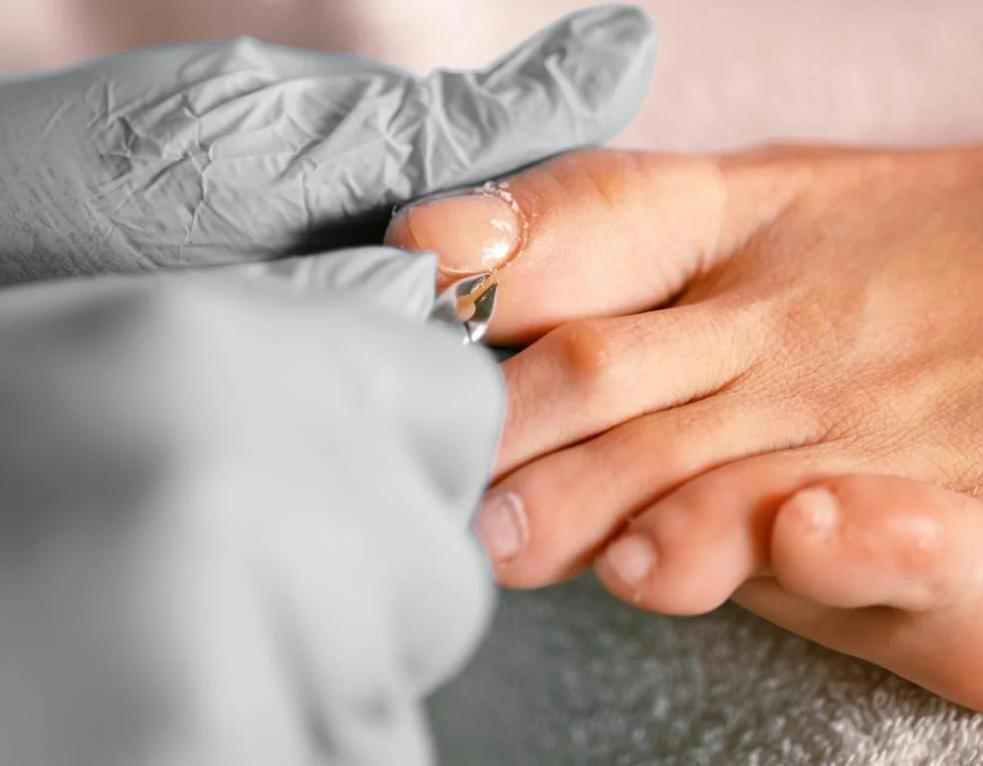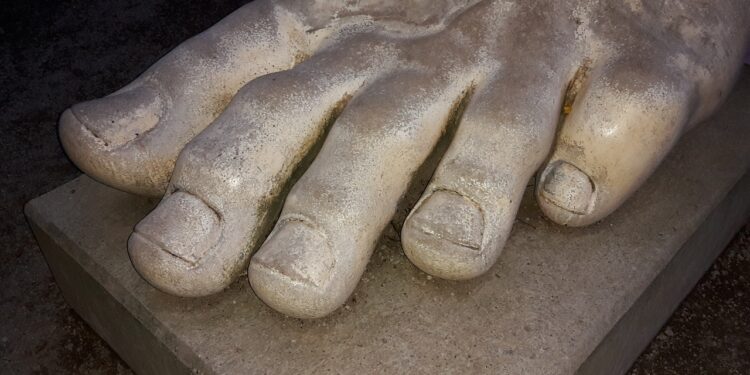An ingrown toenail is a type of foot condition where the edge of a toenail grows into the skin close to it. This is usually an issue with the big toe, and it’s especially common in teenagers and adults. However, ingrown toenails can also affect anyone like people who play sports etc.

Symptoms and Signs of Ingrown Toenails
- Pain
- Swelling
- Redness
- Tender to the touch
- Pus
- Changes in nail shape
Causes of Ingrown Toenails
There are a couple of common reasons why people get ingrown toenails, and it all boils down to how well the feet are taken care of. One of the big causes of ingrown toenails is not trimming the toenail properly. Sometimes, you can mistakenly cut your nail too short or curve the edges of your nails, this makes the nail grow into the skin instead of straight out.
Secondly, wearing shoes that are too tight or narrow for your feet, causes the toes to constantly squeeze against each other. This pressure can push the nails into the surrounding skin. That is why it is very common to see people who wear high heels or tight sneakers have ingrown toenails.
Toe injuries are another common cause. If you stub your feet on the wall or at the corner of a table or you drop something on your toe, it can damage the nail and lead it to grow in the wrong direction instead of straight out.
Finally there is the genetic factor. Some people naturally have toes that are more curved and thicker than other people’s toes which makes them more prone to growing inwards.
Complications of Ingrown Toenails
If you are wondering if an ingrown toenail can get complicated, yes, it can. If an ingrown toenail isn’t taken care of, there are a few serious problems that it can lead to. The very first problem is an infection. Once a nail digs into your skin, it opens up a way for bacteria to get in, which can lead to other symptoms like swelling and pus retention.
Another thing to look out for is cellulite. This is when the infection spreads to the skin around the nail. It causes the area to be red and swollen, and even a warm touch in the area can be so painful. Sometimes, when an ingrown toenail digs very deep into the skin, it can form an abscess, which is basically a painful pocket of pus that builds up under the skin. This will require medical attention to drain the pus. In rare cases, if the infection spreads deeper, it could reach the bone, leading to a bone infection called osteomyelitis.
Conclusion
If you notice severe swelling, pain or redness that doesn’t go away, that’s a sign that your toenail might be infected. Furthermore, if you see, pause or feel a lot of heat around the area, it’s better to go in and see a doctor. Because small issues like an ingrown toenail can lead to even bigger problems if not examined earlier.

















